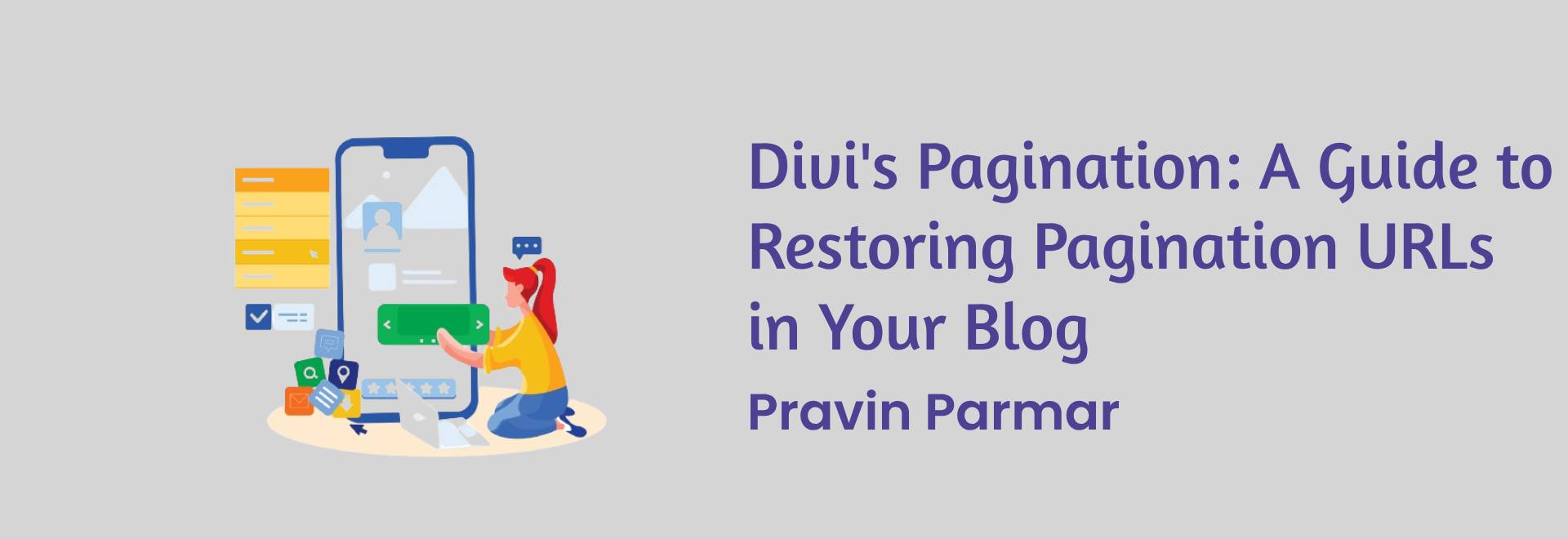
Table of Contents
ToggleUnderstanding the Issue
When using Divi’s default blog module, pagination URLs are often absent from the layout. Instead, only the “Load More” button or infinite scroll options are provided, leading to a lack of individual page URLs for blog archives. This can be problematic for several reasons:
SEO Impact: Search engines rely on pagination URLs to index content effectively. Without distinct URLs for each page of your blog archive, search engine crawlers may struggle to index all your posts, potentially affecting your site’s search visibility.
User Experience: Pagination URLs allow users to bookmark or share specific pages of your blog, enhancing user experience and engagement. Without these URLs, users may find it challenging to return to a particular page or share content with others.
Analytics: Proper pagination URLs facilitate accurate tracking of user engagement and behavior using analytics tools. Without this data, it becomes challenging to assess the performance of individual blog pages and make informed decisions for optimization.
Restoring Pagination URLs
While Divi default settings might not include pagination URLs, there are several methods to restore them:
Custom Code Integration: One approach is to integrate custom code into your Divi theme files. This code snippet generates pagination URLs based on the number of blog posts per page and allows users to navigate through different pages of your blog archive seamlessly. However, this method requires a basic understanding of HTML, CSS, and PHP coding.
Plugin Installation: Alternatively, you can use WordPress plugins designed to add pagination functionality to your Divi blog. Plugins like “WP-PageNavi” or “Simple Pagination” offer easy-to-use solutions for implementing pagination URLs without the need for coding knowledge.
Divi Child Theme Customization: Creating a child theme for Divi and customizing its templates is another viable option. By modifying the blog module template files within your child theme, you can incorporate pagination URLs directly into your Divi blog layout while maintaining compatibility with future theme updates.
Best Practices for Implementation
Regardless of the method chosen, it’s essential to follow best practices to ensure the successful implementation of pagination URLs in your Divi blog:
Backup Your Website: Before making any changes to your theme files or installing plugins, always back up your website to prevent data loss in case of unexpected issues.
Test Thoroughly: After implementing pagination URLs, thoroughly test your blog layout to ensure proper functionality across different devices and browsers. Check for any compatibility issues with other plugins or customizations.
Monitor Performance: Keep an eye on your website’s performance metrics, including page load times and user engagement, after adding pagination URLs. Monitor any changes in search engine rankings and user behavior to assess the impact of these improvements.
Conclusion
Pagination URLs play a crucial role in enhancing the usability and SEO-friendliness of your Divi blog. By restoring pagination functionality, you can improve navigation, user experience, and search engine visibility. Whether through custom code integration, plugin installation, or theme customization, implementing pagination URLs is a worthwhile investment that can benefit both your site visitors and your overall online presence. With the right approach and attention to best practices, you can unlock the full potential of your Divi blog and optimize its performance for success. I am Pravin Parmar and I am a WordPress Developer who builds custom themes, plugins, and client websites. Let’s talk with me.